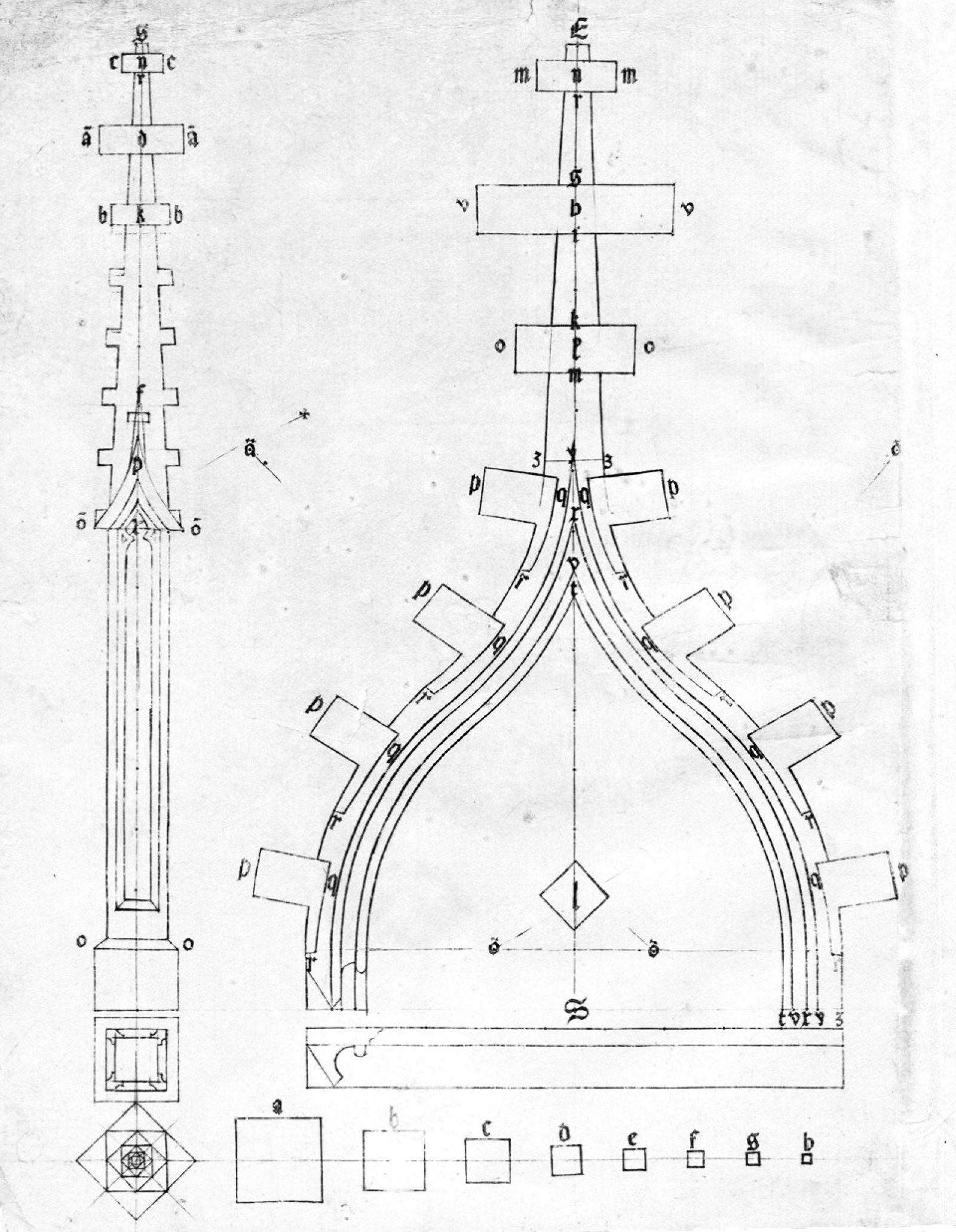Ricerca
“Drawn From The Ground”: Tracing the Auszug in Late Medieval Architectural Drawing Practice
Daniel Tischler | Doctoral Mobility Grant Fellow

from: Schmuttermayer, Hans. Fialenbüchlein. Nuremberg: Georg Stuchs, 1484–89.
“Architectural drawings are projections,” asserted even Robin Evans, arguably one of the most analytically sensitive figures of 20th-century architectural historiography. Yet the paradigm of projection falls short of the transhistorical and universalist implications, with which its specifically modern concept of representation is commonly imposed onto the entire history of architectural drawings. I want to draw attention to a historical phenomenon that lends itself to challenge this dominant understanding: The late medieval practice referred to as “Auszug” in the few surviving design booklets and stonemasons’ ordinances from 15th-century Central European cathedral workshops. While paralleling orthographic projection structurally, i.e., in serving the same two functions of being both a technical procedure to construct drawings and an epistemological frame for imagining how graphic form becomes architectural matter, the Auszug offers a substantially distinct and historically specific conceptualization of what architectural drawings are and do. This project systematically traces the Auszug in its graphic and textual sources, in order to reconstruct both its material and discursive significance in historical architectural practice.
It further aims to foreground the intricate reciprocity between the ’medieval‘ Auszug and its ’modern‘ counterpart of orthographic projection, encompassing a period starting well before and ending well after the late 15th and early 16th centuries—the very time of their most distinct documentation and emergence, respectively. By highlighting these instances of entanglement, the project seeks to complicate the teleological narrative of Western historical thought and its deeply ingrained medieval-modern dichotomy—by identifying the medieval and the modern and the modern in the medieval.


